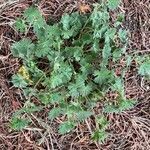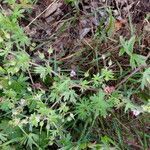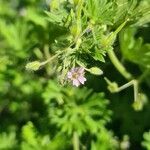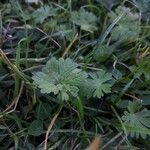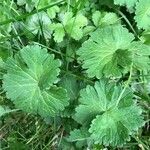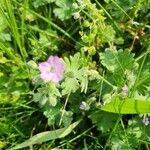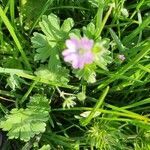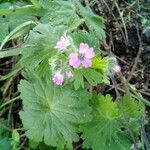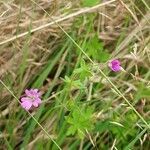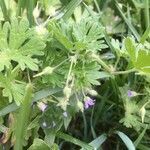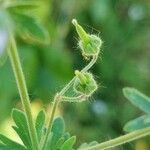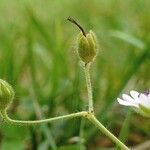Taprooted annual, to over 30 cm tall, but often much less, densely clothed in short hairs. Stems decumbent to spreading, often branched from the base. Lvs with long eglandular, and short glandular hairs. Lower lvs long-petiolate. Lamina palmately lobed, 1-3.5 × 1.5-4.5 cm, reniform to almost orbicular; lobes 5-9, extending 3/4 way to petiole, 2-3-lobed; secondary lobes oblong to obovate. Upper lvs smaller and simpler with shorter petioles. Fls numerous, often paired; peduncles short; pedicels usually longer than peduncles, curving upwards after flowering, densely clothed in glandular hairs. Sepals 2-3 mm long (to c. 4 mm at fruiting), ± ovate, densely clothed in long, white, pilose and short glandular hairs, mucronate. Petals 2.5-3.5 mm long, obovate, emarginate, pale mauve; claw short. Stamens 10, 4-5 reduced to staminodes (lacking anthers); filaments whitish; anthers mauvish brown. Mericarps 1.5-2 mm long, densely clothed in appressed hairs on outer face. Seed smooth.
Diffusely branched annual or biennial, spreading or ascending, to 5 dm; basal lvs long-petioled, the rotund, 3–6 cm blade deeply 7–9-cleft with cuneate divisions palmately lobed at the summit; upper lvs progressively reduced; fls numerous on densely but minutely glandular pedicels; sep acute or shortly mucronate, 2.5–4 mm at anthesis, ± hirsute, especially at the margins, nearly as long as the retuse pet; 3–5 outer stamens lacking anthers; fr, including the cal, 9–12 mm, the stylar beak very short or none, the carpel-bodies strigillose, not wrinkled; seeds smooth; 2n=26. Native of Europe, established as a weed in fields and waste places from N. Engl. to B.C., s. to N.C., Ark., and Oreg. All summer.
